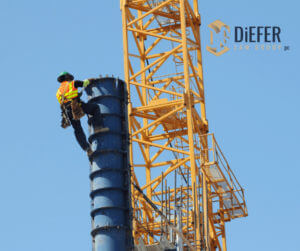
If you are a construction worker in California, you and your co-workers will likely join construction workers across the country in participating in the National Safety Stand-down to prevent falls in construction from May 3 to May 7. Hopefully, the campaign will pay some attention to the importance of preventing suspension trauma in the event of a fall from an elevated workplace.
What is suspension trauma?
While suspended in your fall arrest harness after falling from a high workplace, your life could be on the line. Immediate rescue is crucial because death could occur within 30 minutes or less. Your harness might arrest your fall, but it will hold you suspended vertically with your legs dangling. What happens next is your blood pooling in your legs, compromising blood circulation and causing oxygen deprivation of your brain.
If you experience any of the following symptoms, it could be the start of suspension trauma:
- Dizziness
- Nausea
- Paleness
- Vision narrowing
Once these symptoms start, you could be unconscious in as little as three to five minutes. The goal must be to rescue a suspended worker before that happens.
What can you do to limit the risks of death?
If you do not lose consciousness during the fall, you might help yourself by encouraging blood circulation. If your fall arrest harness has foot straps, you can stand on them and keep your muscles active. It will prevent the harness from cutting off your blood circulation around your upper legs. If you are close enough to a building to swing yourself toward it, you can kick yourself away from the wall, repeating this while awaiting a rescue team.
What can your co-workers do while waiting for rescue workers?
Most importantly, one worker should call 9-1-1 and stay on the line to get the operator’s ongoing instructions. Depending on the height, they could place a ladder to allow you to climb down. Another possible option might be suspending a flexible ladder from the building above, or if there is an aerial lift available, they might get you down that way.
Essential notes for after the rescue
If your co-workers manage to get you to safety before emergency crews arrive, they must take the following steps:
- They must stay with you and keep you in a sitting position with your legs stretched out in front of you.
- They should prevent you from lying down in a horizontal position.
- They must help you to remain quiet and calm.
- If you have lost consciousness, they must keep your air passages open.
- They must continue following the 9-1-1 operator’s instructions.
If you are familiar with the steps required to keep a suspended worker safe, you will be able to tell your co-workers what to do if they do not know. Once the ordeal is over, you might need further hospitalization and treatment. Fortunately, the California workers’ compensation insurance program will have your back. If you file a claim within the time limit, benefits will cover your medical expenses and lost wages.







